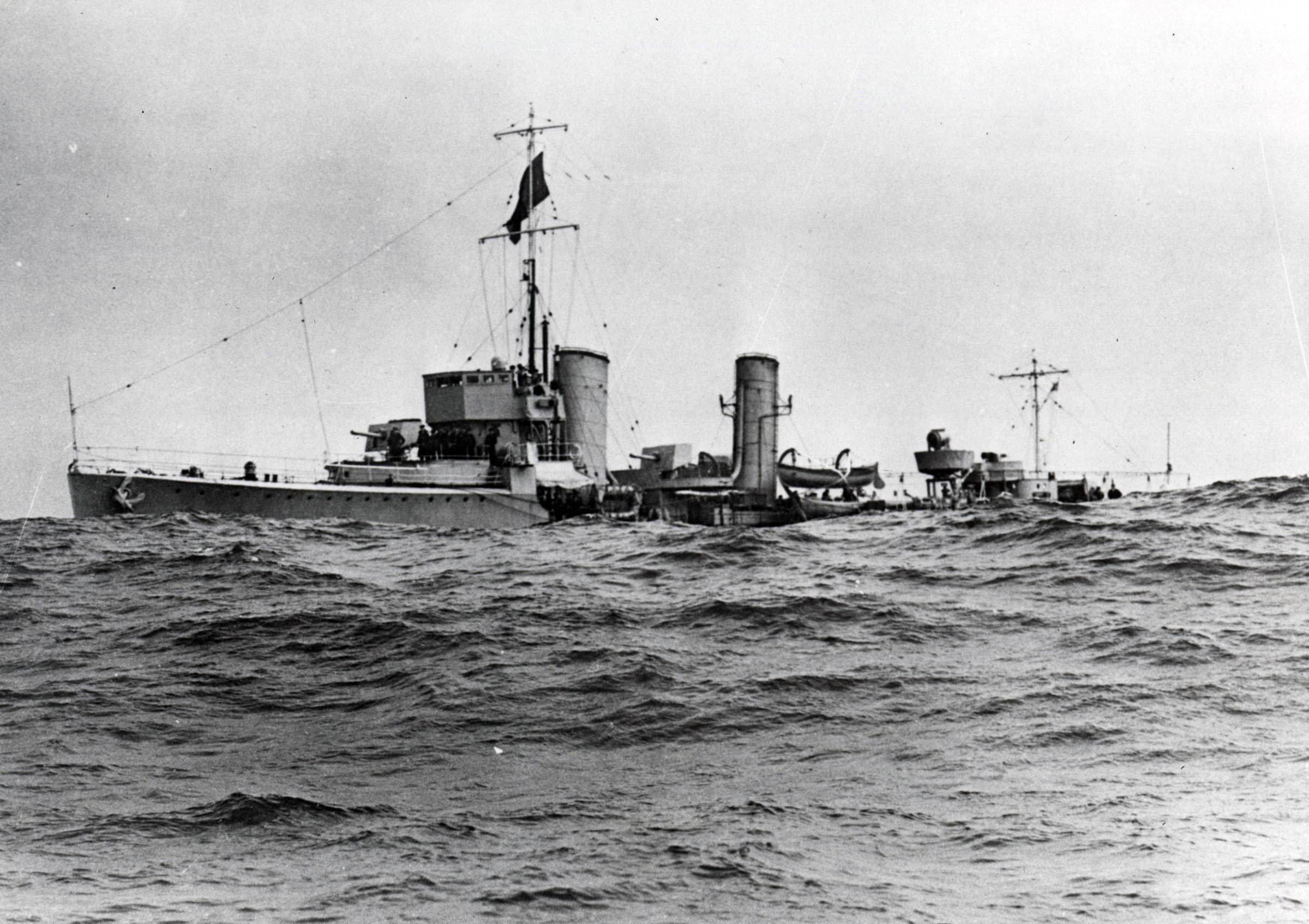HMCS CHAMPLAIN

HMCS CHAMPLAIN
The History of HMCS CHAMPLAIN
In 1917, RN intelligence received reports about the contemporary German torpedo craft which appeared more lightly armed than their RN counterparts. This information led to a revision of destroyer design and it was decided to build ships which were smaller, faster and less expensive, ships which could be built quickly.
These were known as the Admiralty modified 'Trenchant' or "S"-class, and it is to this group which VANCOUVER and CHAMPLAIN belonged. Five members of this class were built by Thornycroft's, and were generally larger and stood higher out of the water than the majority of their sister ships.
CHAMPLAIN (ex-HMS TORBAY), launched March 6th, 1919, and VANCOUVER (ex-HMS TOREADOR), launched Dec 7th ,1918, weighed in at 1,075 tons, and had a length overall of 267', a beam of 25.75' and a draught of 9'. Their Yarrows boilers and Brown Curtis turbines developed 29,000 hp and the ship's design speed was 36 knots, though nearly all of the Thornycroft's ships exceeded 38 knots during trials. Their armament consisted to 3-4" guns, 6 smaller caliber pieces and 4-21" torpedo tubes. They had a crew complement of 90.
These ships were provided to Canada to replace PATRIOT and PATRICIAN during the period it would take to build two new destroyers specifically for Canada. CHAMPLAIN and VANCOUVER were the first ships commissioned into the RCN, other than auxiliaries, to receive names associated with the Dominion.
Both ships were named in the London Treaty, the treaty which set the upper limits to the tonnage of warships of each type that the British Empire, the US and Japan might respectively possess, and were due for disposal in 1936. Both were paid off on Nov 25th, 1936, and were sold for scrap sometime in 1937.
HMCS CHAMPLAIN Statistical Data
- Pendant:
- Type: Destroyer
- Class:
- Displacement: 1087 tonnes
- Length: 276 ft
- Width: 27.5 ft
- Draught: 10.5 ft
- Speed: 30 kts
- Compliment: 90 Officers and Crew
- Arms: 3 - 4", 1- 2 pdr., 4 - 21" TT (2xII)
- Builder: Thornycroft & Co., Southampton, U.K.
- Keel Laid:
- Date Launched: 06-Mar-19
- Date Commissioned: 01-Mar-28
- Paid off: 25-Nov-36
Remarks
Formerly RN
